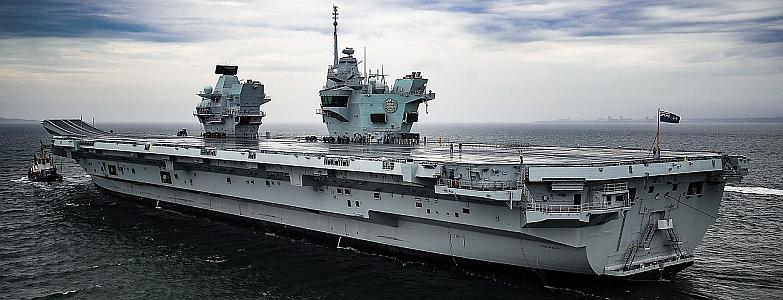 We now have the answer why the Royal Navy’s newest aircraft carrier, HMS Prince of Wales, broke down off the Isle of Wight, in late August 2022. The external shaft coupling on the starboard propeller shaft failed, resulting in serious damage to the shaft and the propeller, and lesser damage to the rudder.
We now have the answer why the Royal Navy’s newest aircraft carrier, HMS Prince of Wales, broke down off the Isle of Wight, in late August 2022. The external shaft coupling on the starboard propeller shaft failed, resulting in serious damage to the shaft and the propeller, and lesser damage to the rudder.
But why did the shaft coupling fail? As we noted in a previous post, the failure of a propeller shaft coupling is extremely rare. The First Sea Lord described the failure as “unprecedented.” Indeed, few marine engineers can remember an instance of this happening.
It turns out that the underlying problem was not the coupling but a misaligned propeller shaft. According to a letter from the UK Ministry of Defence to the House of Commons Defence Committee, “The causal factor identified in this instance was that PWLS starboard shaft was misaligned from build, and that the incorrect installation of key components resulted in the defect suffered.”
It appears that the misaligned shaft may have caused a shaft bearing failure that, in turn, caused the shaft coupling to fail.
Following the breakdown, the port propeller shaft was also overhauled over concerns that it too had been misaligned.
As noted by UKDJ.com, according to the letter, during the ship’s sea trials, both shafts were extensively tested over several weeks and thousands of nautical miles. Vibration readings remained within limits at all times, and no issues, conditions of class, or actionable items were transferred into service from the Aircraft Carrier Alliance (ACA) to the Ministry of Defence (MOD) in 2019 at Vessel Acceptance.
While this may have been the case, the Daily Mail reports that the skewed propeller shafts believed to be behind the breakdown of Britain’s newest aircraft carrier were known by the shipyard before she was handed to the Royal Navy.
Sea trials carried out on the £3 billion HMS Prince of Wales in 2019 uncovered the fault while she was still under construction in Scotland. However, it went uncorrected and naval chiefs were left red-faced last August when a steel coupling on the starboard propeller shaft suddenly fractured during the ship’s colourful send-off from Portsmouth Naval Base for a high-profile visit to the US.
Engineers discovered ‘elementary’ misalignment mistakes in the warship’s starboard and portside shafts. But sources confirmed the fault was found while she was still being built at Rosyth, Fife — and a decision was taken to leave it, as it was deemed to be within levels of ‘tolerance’.
The remaining question to be answered is who is liable for the £25 million cost of the repairs to the aircraft carrier — the shipbuilders or the British taxpayers?
As noted by Breaking Defense, construction and delivery of the warship were carried out by the now defunct Aircraft Carrier Alliance comprising BAE Systems, Babcock and Thales, complicating the liability assessment but also potentially leaving the MoD to shoulder costs of the repair bill.
Thanks to David Rye for contributing to this post.

Somebody forgot to stick a broom handle through the hole to check the alignment 🙂